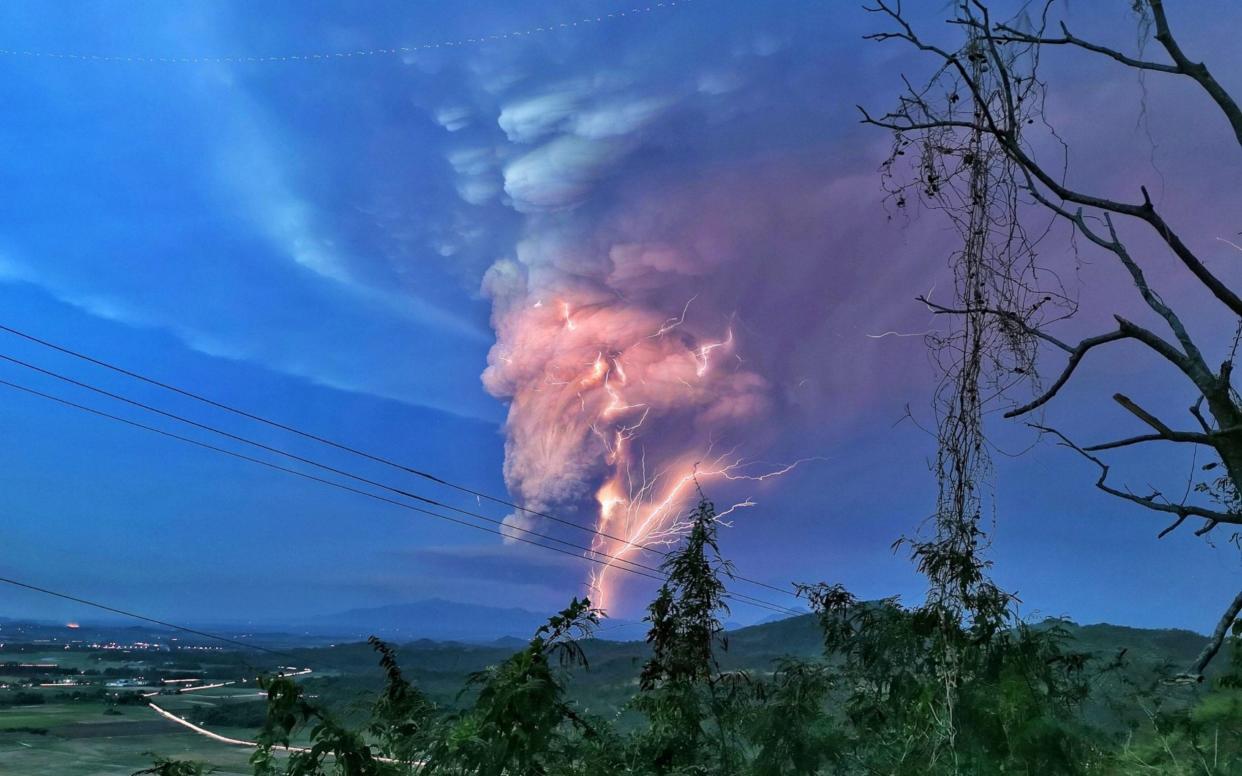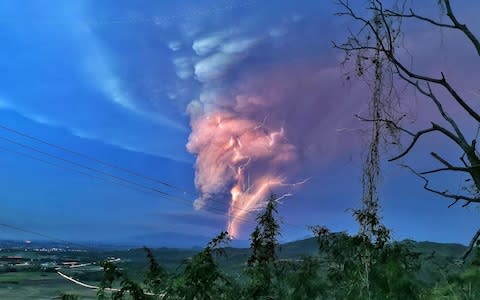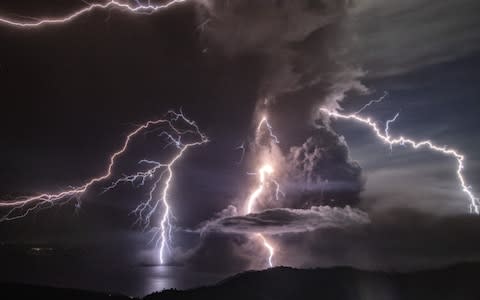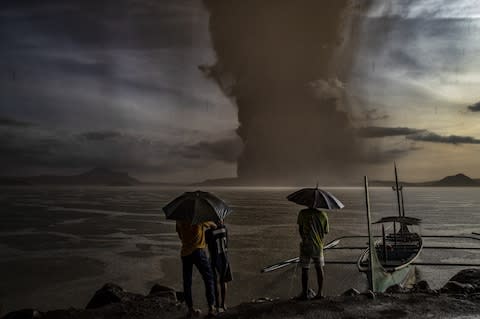Rare volcanic lightning seen as huge numbers evacuated over fears of 'explosive eruption' in Philippines

The Philippines is preparing to evacuate hundreds of thousands of people in the path of an active volcano amid warnings of an “explosive eruption” that could also trigger a deadly tsunami.
More than 24,000 people have already been forced to flee their homes and take shelter in 75 evacuation centres since the Taal volcano suddenly spewed a plume of ash from its crater half a mile into the air on Sunday.
The volcano continued erupting throughout Monday as desperate residents left their homes and possessions behind. Ash blew across Manila, the capital city, closing down schools and offices as traffic came to a halt and hundreds of flights were grounded at the main international airport.


Although one of the world’s smallest volcanoes, Taal, a tourist attraction that sits in a picturesque lake, is considered to be one of the most dangerous because of its high activity and its location in a densely populated area some 45 miles south of central Manila.

The eruption began with an explosion of superheated steam and rock but as lava and broad columns of ash continued to belch out of the crater, they were illuminated by stunning lightning shows, in a little-understood phenomenon that has been attributed to static electricity.
Plantlife, buildings and cars in the immediate dangerzone were left covered in layers of ashen dust several centimetres thick and local roads were transformed into sludge as it mixed with rain.
Among the evacuees was Thomas Barba, 53, who was eating lunch with his brother overlooking the volcano when they suddenly noticed mushroom-shaped smoke, followed by muddy rain.

They rushed through heavy traffic to warn their families to leave their home in the nearby village of Talisay.
“Around 8pm, we felt a 10-second tremor. The entire place was pitch black and the only lights visible were from the thunderstorm coming from the volcano. It was the kind of lightning that I’d only ever seen in an alien movie,” he said.
“I heard a sound like pebbles were falling on the roof.”
Terrified, the men fled on foot. “There were tree branches all over the streets, and mud everywhere. I felt like it was the end of the world,” said Mr Barba.

Authorities raised the volcano alert level to four on Sunday, its second-highest level, saying an "explosive eruption" could happen in "hours to days,” but experts fear the volcano could keep erupting for months to come. This graphic explains why the volcano is so dangerous:

The Philippine Institute of Volcanology and Seismology said it had recorded a total of 144 volcanic earthquakes in the Taal region between 1pm on Sunday and 4pm on Monday.
In a statement, it said that the volcano continued to erupt with “weak sporadic lava fountaining and hydrovolcanic activity in the main crater that generated steam-laden plumes approximately 2km tall”.
The institute said that short 500-metre lava fountains were emerging on the northern flank of the volcano, and reported heavy ashfall to the southwest.
As well as the total evacuation of the volcano island and a 9-mile radius, it urged the public to take precautions against fine ashfall that could cause respiratory problems.
In Manila, masks sold out quickly and the public were urged to report overcharging. Some wore handkerchiefs across their faces as they breathed air tainted by the smell of sulfur.
The army and aid agencies sent vehicles and personnel to the worst-affected areas as the defence minister urged residents not to hesitate to leave.
However, some residents could not move out of ash-blanketed villages due to a lack of transport and poor visibility immediately.
“We have a problem, our people are panicking due to the volcano because they want to save their livelihood, their pigs and herds of cows," Mayor Wilson Maralit of Balete town told DZMM radio.
"We're trying to stop them from returning and warning that the volcano can explode again anytime and hit them."
People for the Ethical Treatment of Animals, an animal rights organisation, also called for items needed for relief operations for animals and said it was sending in teams.

Experts have warned that if the volcano erupts, ash carrying microscopic shards of glass, rather than lava flows, could create the biggest health hazard. It could potentially contaminate the air and water within a radius of more than 60 miles.
One of the most active volcanoes in the Philippines, Taal has erupted more than 30 times in the past five centuries, most recently in 1977. An eruption in 1911 killed 1,500 people and one in 1754 lasted for a few months.
The Philippines sits on the Pacific "Ring of Fire", where tectonic plates collide deep below the Earth's surface.


